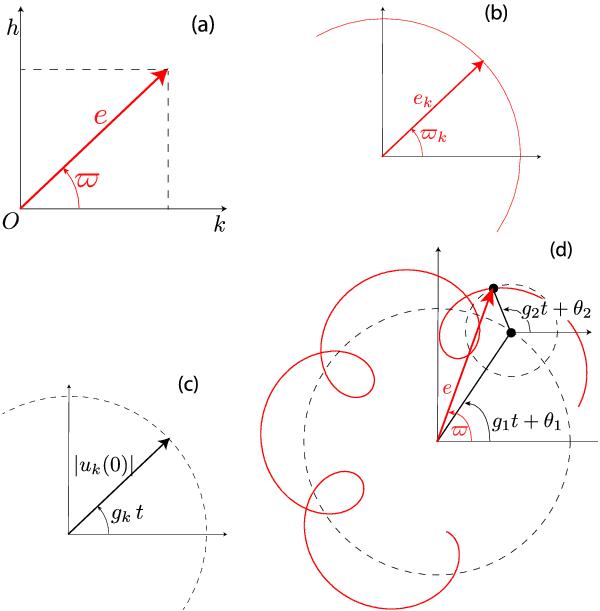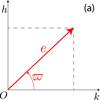Fig. 1

a) The complex variable z = eexp(iϖ) provides the orientation and eccentricity of the orbit in the plane. Alternatively, one can use the rectangular real coordinates k = ecosϖ, h = esinϖ, as in Murray & Dermott (1999). b) If the Lagrange-Laplace matrix A were diagonal, the eccentricity of all planets would be constant with uniform precession. c) As A is not diagonal, one needs to make a linear transformation to transform zk into proper modes uk. The proper modes amplitude are then constant and uk precess uniformly with frequency gk. d) The full solution zj = ejexp(ϖj) are linear combinations of the proper modes uk. In the figure,  with two proper modes (i.e. two planets and n = 2). The red curve represents the evolution of the eccentricity and longitude of perihelia of Jupiter over 200 000 years under the perturbation of Saturn.
with two proper modes (i.e. two planets and n = 2). The red curve represents the evolution of the eccentricity and longitude of perihelia of Jupiter over 200 000 years under the perturbation of Saturn.
Current usage metrics show cumulative count of Article Views (full-text article views including HTML views, PDF and ePub downloads, according to the available data) and Abstracts Views on Vision4Press platform.
Data correspond to usage on the plateform after 2015. The current usage metrics is available 48-96 hours after online publication and is updated daily on week days.
Initial download of the metrics may take a while.






